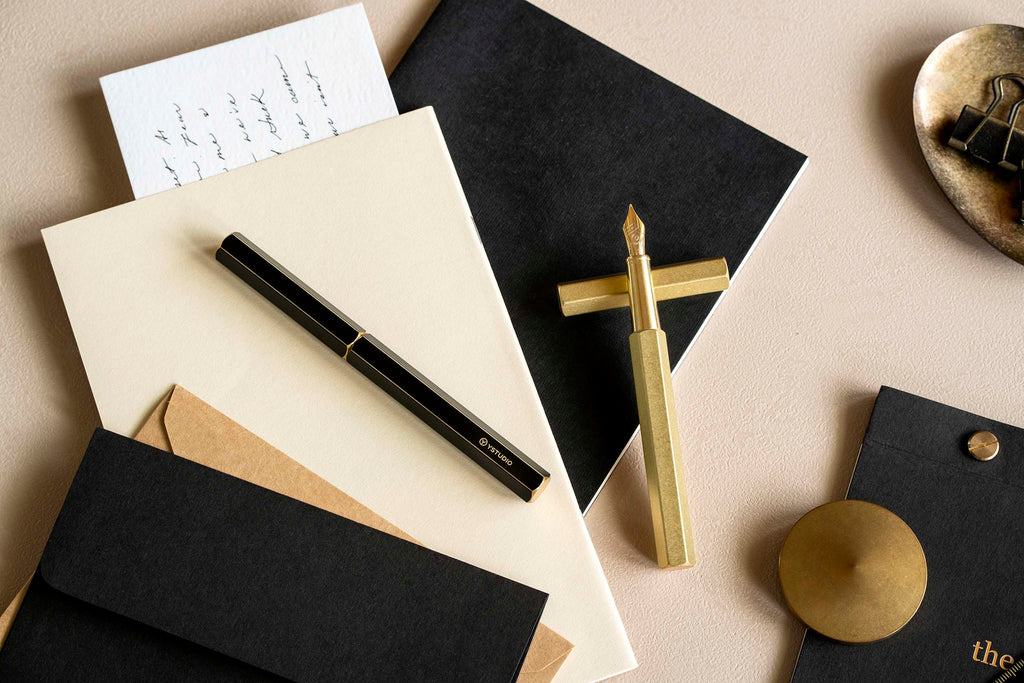Fountain Pen Feed: Exploring the Mechanism Behind Ink Flow

Fountain pens are a very classy and elegant writing tool. It has evolved throughout the centuries wherein fountain pens in the 10th century were made from feathers and quills. It was in the 1800s that the fountain pen was mass-produced and continued to evolve into what it looks like at present.
When looking at fountain pens, it is the nib that is often looked at, especially since this comes in different styles and designs. However, the fountain pen feed is just as important as the nib since without it, the ink will not be delivered to the nib.
In this article, we look at the intricate mechanics of the fountain pen feed, exploring its design, function, and significance in the world of writing instruments.
What is a Fountain Pen Feed?
The fountain pen feed is a slender, often hidden component beneath the nib. Typically made of hard rubber or plastic, the feed has channels and fins that regulate the flow of ink from the pen's reservoir to the nib.
The fountain pen feed is simple yet remarkably effective in delivering the right amount of ink to the nib. As the nib glides across the paper, this draws ink from the reservoir into the feed's channels. While looking very quaint, a fountain pen feed ensures smooth and consistent writing without blotting or skipping.
Modern fountain pens such as the classy Classic Revolve-Fountain Pen are great for both beginners and experts. It has a lightweight but balanced brass body which makes it classy as well as functional, to facilitate ease of writing. The pen feed of this pen is high quality so you can have the assurance that the pen can last for years and can withstand a variety of writing and sketching activities.

Types of Fountain Pen Feeds
Fountain pen feeds come in various designs and are made to suit different writing styles and purposes. Some feeds are made much more intricately to prioritize enhanced ink flow while some feeds are built to be more durable and for easier maintenance. The two most common types of fountain pen feeds are made from either plastic or ebonite:
Plastic Fountain Pen Feed
The majority of fountain pens nowadays have feeds that are made with plastic. These are designed to have the right amount of air compensation to allow ink to flow smoothly at a controlled amount. While not as durable as ebonite feeds, plastic fountain pen feeds have a polished surface to ensure that it does their purpose and can withstand time. Multiple fountain pens have plastic feeds which are great even for heavy-duty calligraphy and even sketching.
Ebonite Fountain Pen Feed
Ebonite is a much-favored fountain pen feed since it has a better capillary that creates a better flow of ink. Since ebonite can be heated to fit perfectly with other parts of the fountain pen such as the nib and nib collar, it creates better capillary action and ink saturation capabilities. Since ebonite fountain pen feeds are handmade, this makes them very expensive when compared to plastic pen feeds.
A downside of ebonite feeds is that they tend to run wet whenever there are sudden temperature changes. This results in ink blotting or ink refusing to flow to the nib. You may also want to constantly check and ensure that there is enough ink since the ink flow can become inconsistent when the ink is low.

The Importance of Proper Fountain Pen Feed Maintenance
While fountain pen feeds are designed to provide years of reliable service, proper maintenance is essential to ensure optimal performance. Regular cleaning and flushing help prevent ink buildup and blockages, preserving the feed's functionality and extending the life of the pen.
You can easily maintain the cleanliness of your fountain pen feed and nib by simply soaking them in clean water overnight. Doing this can help in removing ink residue and dried ink that can largely affect how the ink flows and writes. Additionally, occasional adjustments to the feed's alignment or positioning may be necessary to fine-tune the writing experience to your liking.
Conclusion
When it comes to fountain pens, each part plays a crucial role such that if one piece is not present, it will make the pen dysfunctional. While fountain pen feeds are not the first thing that people look at when purchasing a fountain pen, knowing their function and the different types can help you decide which pen to get. By knowing which feed type will be more suitable to your needs and how you plan on using your fountain pen, you can have guarantee that your fountain pen can last you a long time, delivering writing satisfaction every time.

